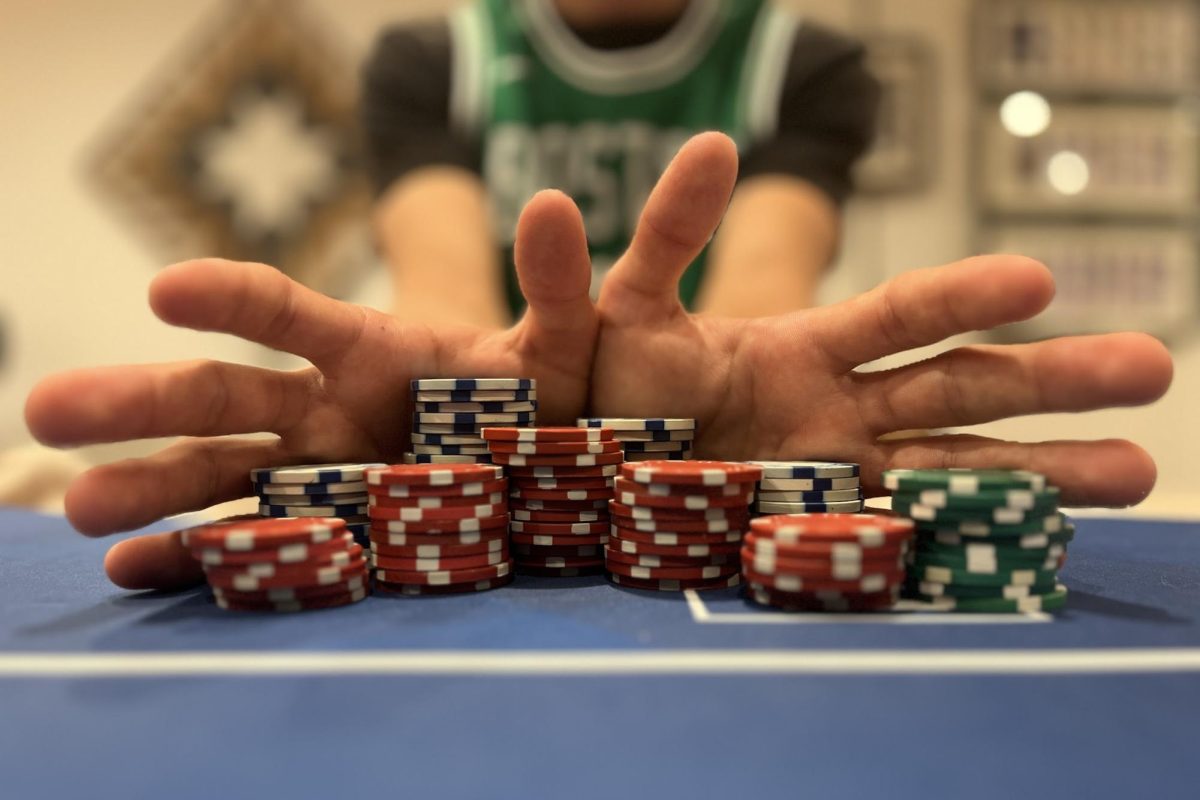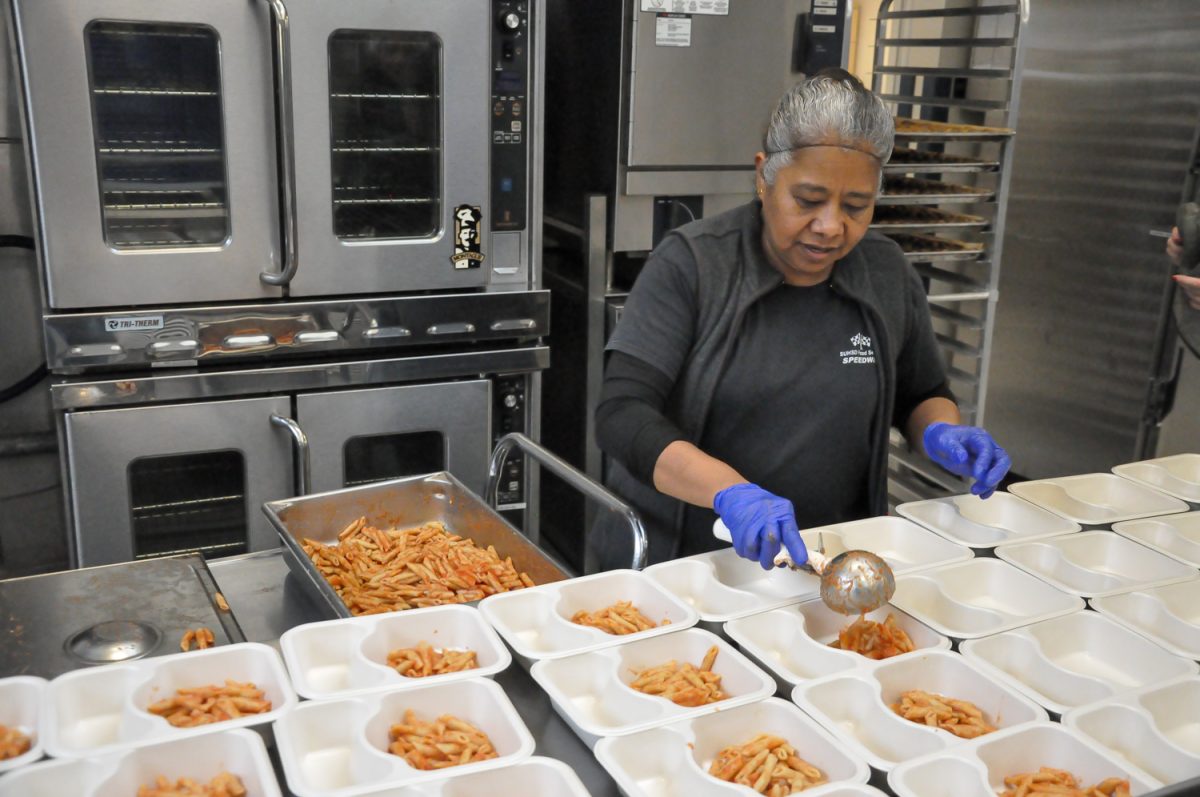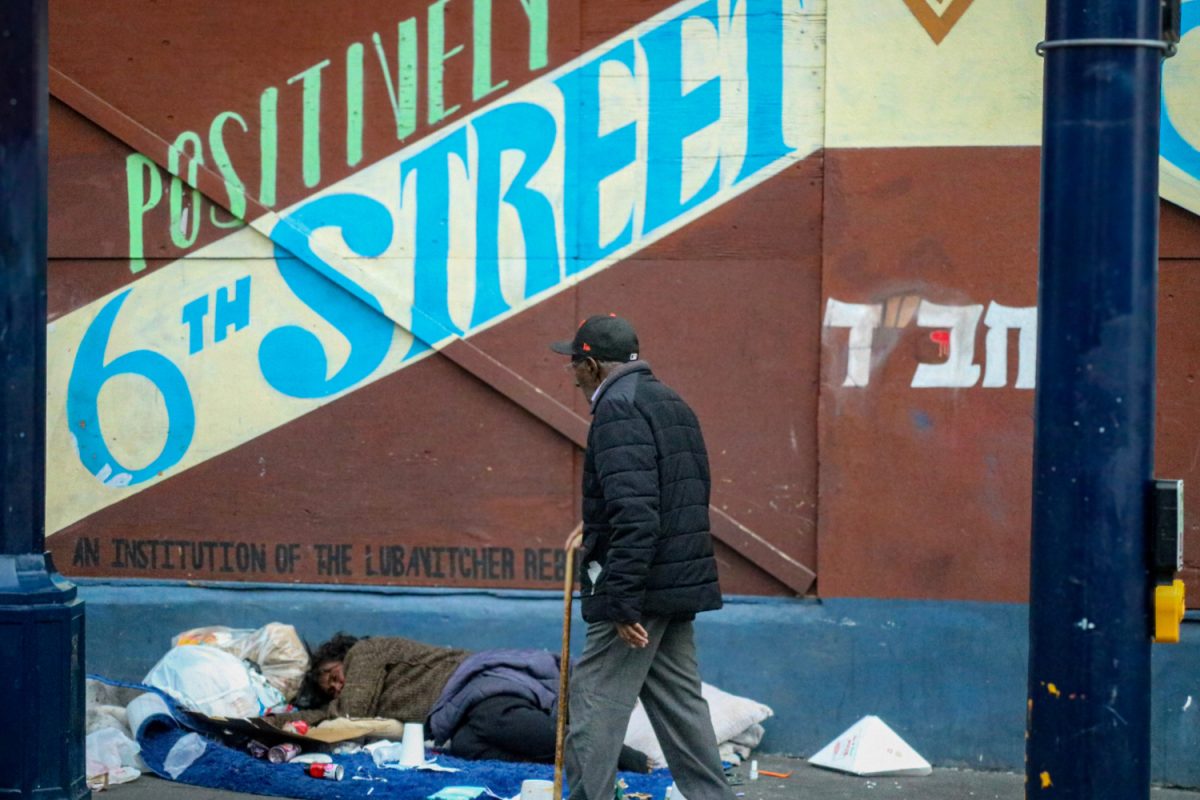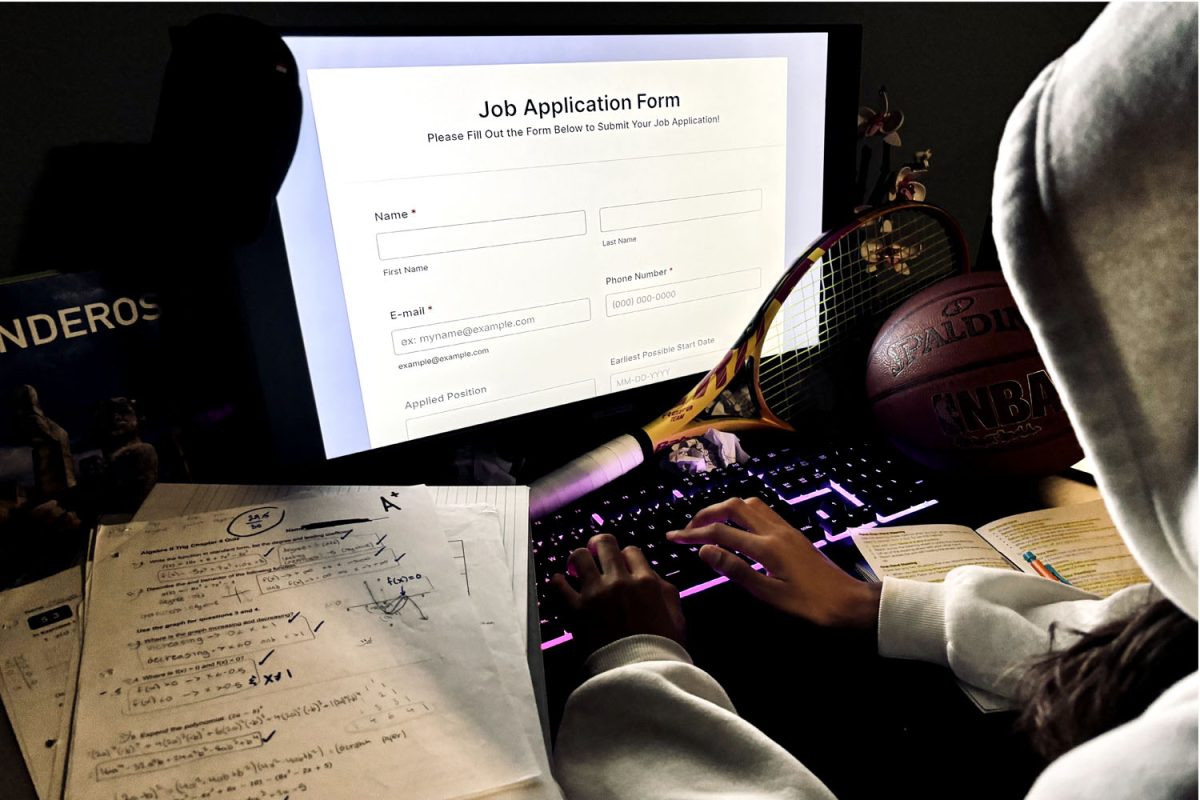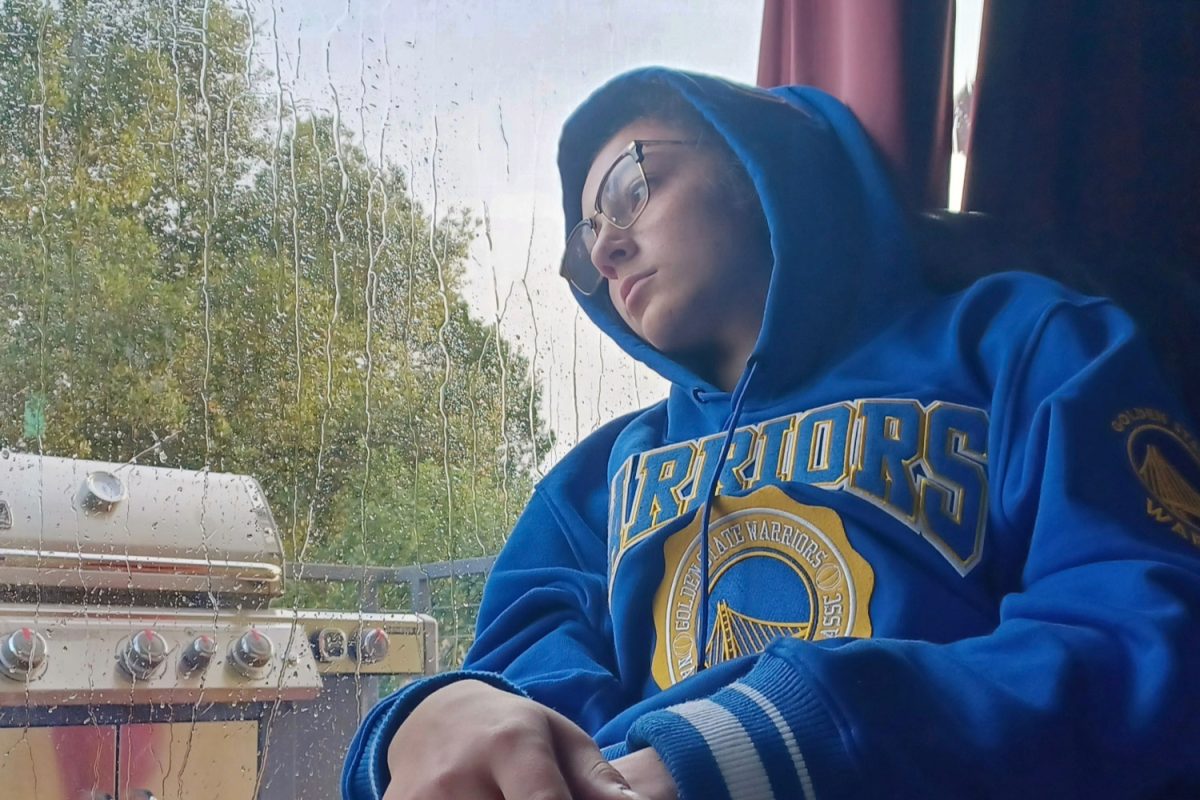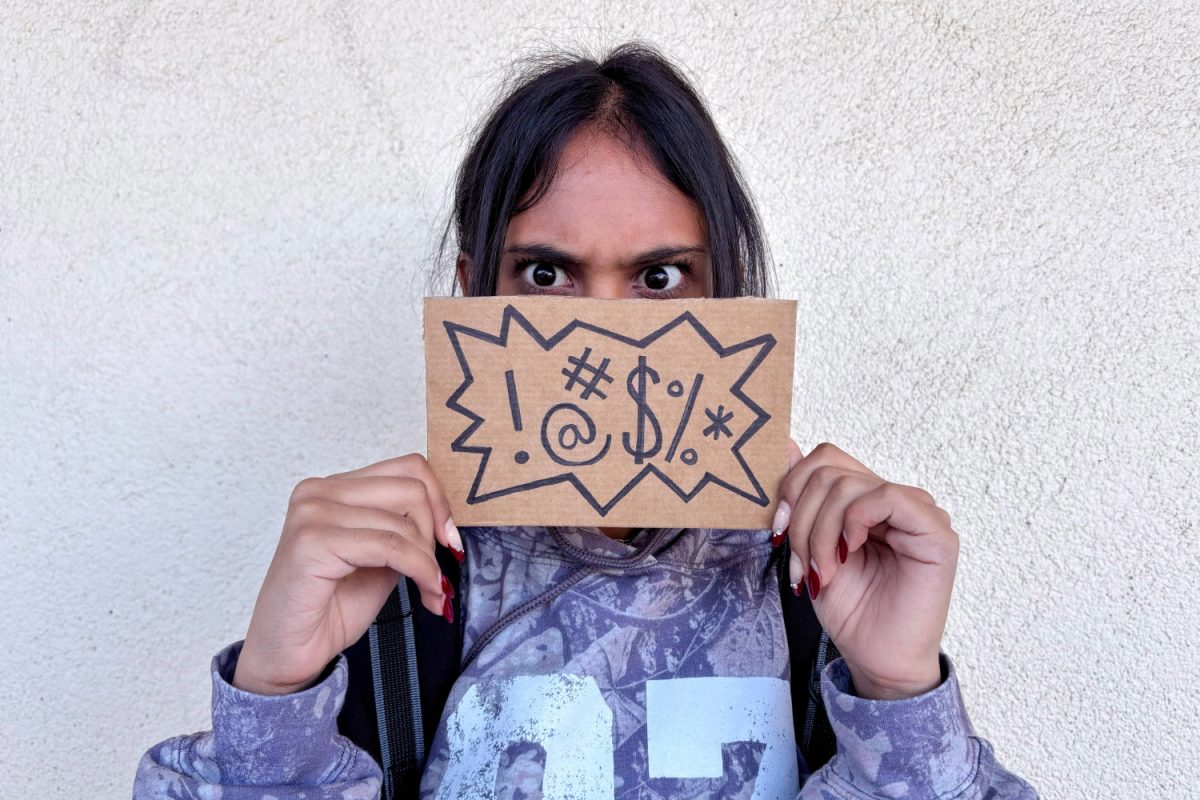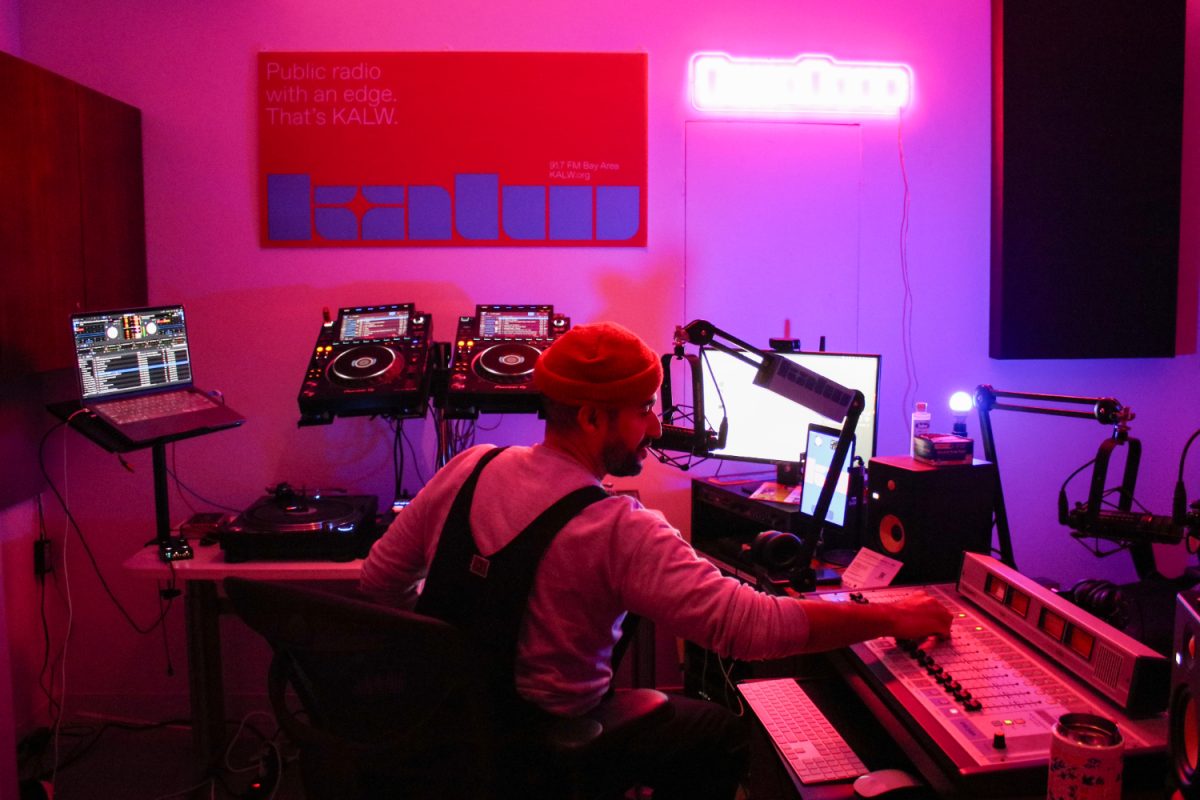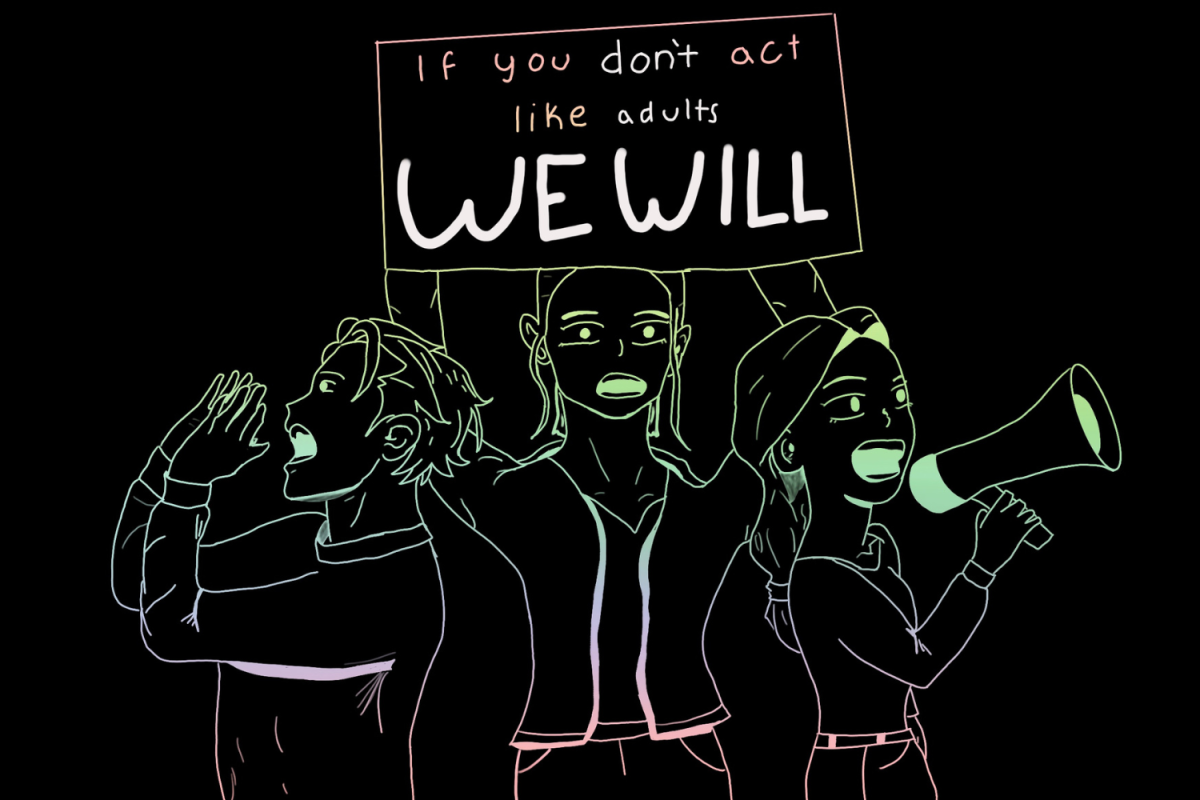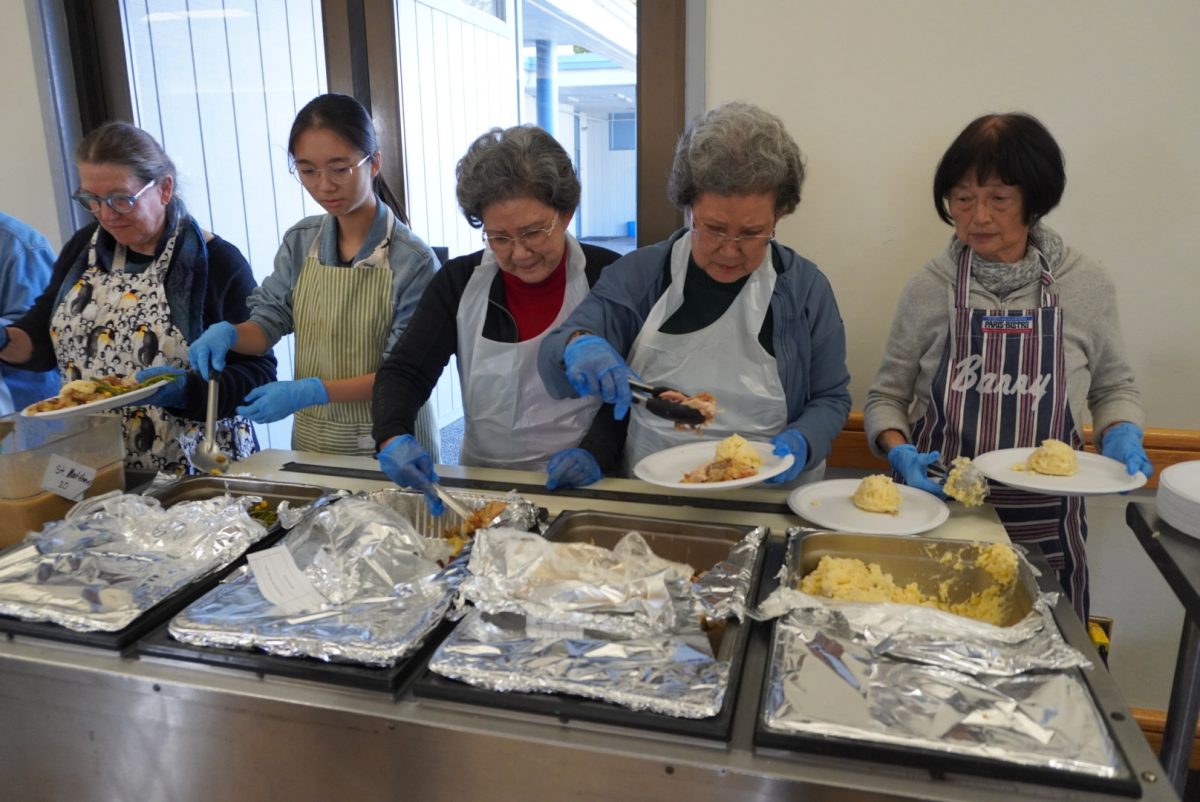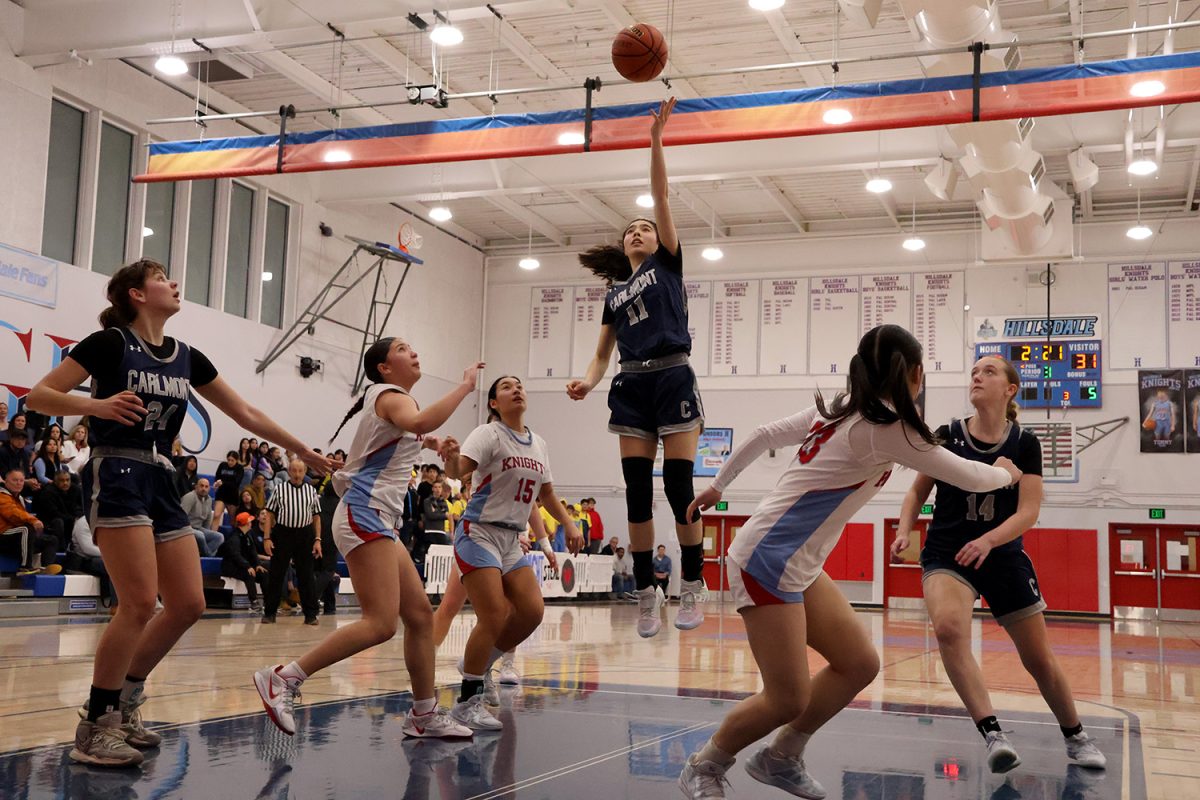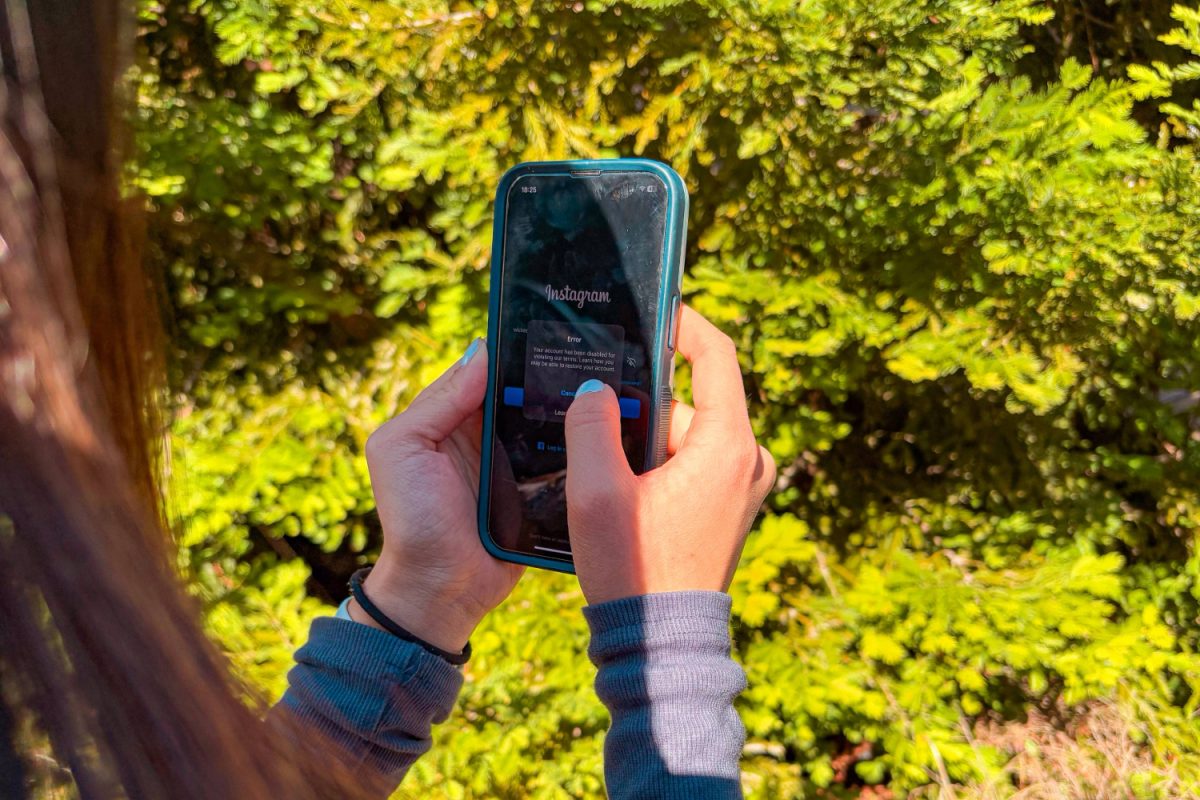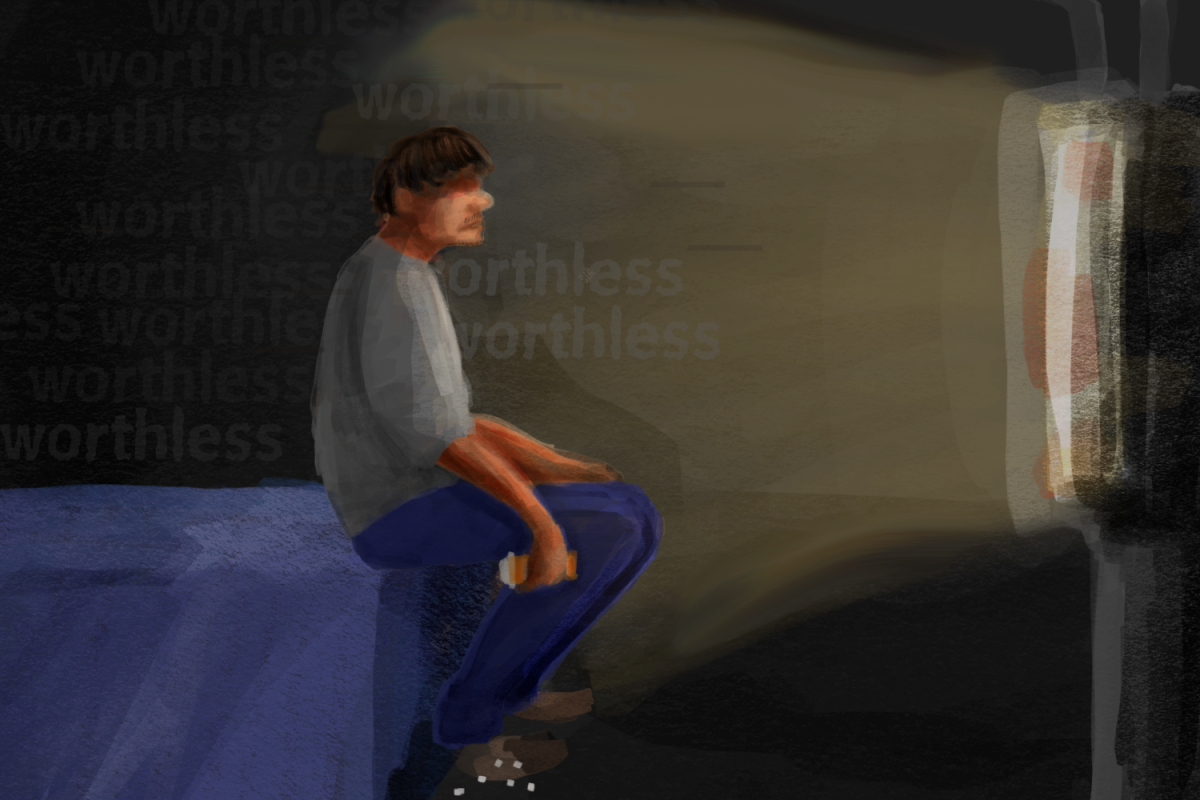The clinking of chips against felt, the spinning of slot machines, the ring of a DraftKings notification. These are the sounds that surround the lives of gamblers.
Every day, millions worldwide place bets on casino games, sporting events, and dozens of other gambling activities. Increasingly, young people, and young men especially, have been swept up by the stream of betting that has enveloped American culture.
In 2022, the National Council on Problem Gambling (NCPG) reported that approximately 60% of high-school-aged adolescents reported having gambled for money in the last year. About 10-14% of adolescents are at risk for developing a problem with gambling.
‘Let’s Go Gambling!’: the rise of online betting
Since the Supreme Court struck down the federal ban on sports betting, Americans have been betting more than ever before. According to the Associated Press, Americans have bet over $220 billion since the Supreme Court decision through legal sports betting avenues such as FanDuels, DraftKings, and BetMGM.
Due to the rise of popular sports betting apps, online betting is more accessible than ever. All it takes for a minor to participate is an adult’s phone or sportsbook account.
“I used one my of older friends’ accounts,” said John Smith*, a freshman at the University of Oregon.
According to the NCPG, the rate of problem gambling is higher in adolescents and when betting is conducted online.
“I started betting when I was 17,” Smith said. “I like to put PrizePicks parlays on basketball and football; it’s kind of like a weekly routine.”
Increasingly, experts are seeing young men participate in online sports betting. According to a poll conducted by Fairleigh Dickinson University, 26% of men under the age of 45 sports bet online, compared to just 10% of the total population participating.
These high rates can be seen among Carlmont’s male population. Of 60 Carlmont boys polled in Carlmont’s quad area, 48.3% reported sports betting online at least once in their lifetime, and of those, 46% had placed a bet in the past two weeks.
“Betting on the game makes it a lot more intense to watch,” said Mateo Golomb, a junior at Carlmont.
It is important to remember that figures related to underage gambling polls can be underestimations. Even though many of these polls are anonymous, students may be deterred from admitting to illegal activity. According to researchers at McGill University, lying about gambling volume and frequency is one of the symptoms of problem gambling and has an impact on the accuracy of data in this field.
The secrecy and taboo about gambling in American society are part of the reason why preventing problem gambling in adolescents is so difficult. According to the University of Michigan’s Institute for Healthcare Policy, only 2% of parents believe their teen has used an online betting platform. This mark falls significantly short of current estimations of adolescent usage.

“My mom didn’t know that I was betting until I told her about a year after I started,” Smith said.
The recent Supreme Court decision isn’t the only factor contributing to the rise of adolescent gambling.
According to the Council on Compulsive Gambling of New Jersey, over 69% of individuals between the ages of 16 and 25 saw over four gambling ads per week. Many students may feel compelled to gamble as there is a positive association between viewing gambling ads and an intention to gamble.
Carlmont students report watching gambling-related videos on social media as well.
“Whenever I’m on TikTok, I see people playing poker or doing Plinko drops online,” Golomb said.
An entire section on the live streaming service Kick is dedicated to Slots & Casino, with tens of thousands of viewers watching at any given time.
These streamers often play classic casino games such as slots and poker or animated games on Stake’s social casino.
Clips of these streams can be found on platforms such as YouTube, TikTok, and Instagram, exposing children as young as 13 to gambling content.
Upping the ante: poker culture at Carlmont
Youth in the United States don’t have access to gambling in casinos. In all states, those under 18 aren’t able to gamble under any circumstance, and the vast majority have a minimum age of 21. As a result, many students who seek the rush that gambling often provides opt to play at home with friends and family.
“I like to play Texas Hold ’em with my friends. We usually play at one of our houses on the weekends,” Golomb said.
Some students use poker as a reason for social gatherings, providing entertainment for a group get-together. Carlmont students typically play in-home games with lower stakes than most casinos.
“Most of the time, we’re playing with $10 buy-ins,” Golomb said. “We’ll get together to watch football or baseball, and someone will suggest that we should play poker.”
Despite the seemingly small amount of money placed per hand, a several-hour-long poker game can lead to multiple buy-ins of chips, quickly multiplying the cost of play.
“One time I had to buy in four times,” said junior Eli Samon. “Let’s just say it wasn’t a fun night.”
Poker games provide an attractive opportunity for many students. Gambling activities allow players to bring home more money than they brought, and games against friends reward winners with bragging rights along with the cash.
“I get a rush whenever I win a hand,” Samon said. “The win is so much better when it’s against someone who’s been talking trash all night.”
However, losing money can mean students have less to spend on other activities.
According to the Bureau of Labor Statistics, only 20.3% of individuals ages 16-19 enrolled in school have a job. Most students don’t have jobs, and those under 16 aren’t legally allowed to work. This means many students gamble without an income, using allowance or money from gifts.
Many students start with small games, but some groups increase the stakes of their game to keep it interesting.
According to the Mayo Clinic, big losses may make compulsive gamblers feel they must recover their money, causing them to bet more and risk increasingly larger sums.
Busted: when gambling goes too far
Gambling is an activity that many find very enjoyable. It can provide a fun social activity to connect with friends over a shared hobby. However, gambling can quickly become dangerous if not kept in check.
“When a student starts hiding their gambling habits and betting more money than they should, that’s when we see that it’s become a problem,” said Jessica Sierra, a youth educator specialist at El Centro de Libertad, an addiction treatment center in Redwood City.
Teens, specifically males, are at high risk for developing problematic gambling tendencies.
The prefrontal cortex, the part of the brain that controls decision-making, isn’t fully developed until age 25. Maintaining healthy gambling tendencies is extremely dependent on sound decision-making, as not knowing when to stop and being reckless with money can have significant negative impacts.
Gambling with peers is often a competitive situation, which, according to the National Institute of Health, attracts many and contributes to the popularity of betting among adolescents.
“Gambling doesn’t seem like a real addiction to many students,” Sierra said. “They don’t see it in the same way as alcohol and drugs, but it can absolutely be as bad.”
While there are many risks associated with gambling, there are also many resources for those who struggle with problem gambling.
Support groups such as Gamblers Anonymous provide a community of people who experience similar struggles with addiction and compulsive gambling behavior.
The Substance Abuse and Mental Health Services Administration has a helpline for those who have trouble with addiction and mental health that operates 24/7. This helpline provides information to individuals experiencing addiction and their families and is 100% free and confidential.
*In accordance with Carlmont Media’s anonymous sourcing policy, the name of the subject has been changed to prevent any social and legal consequences.


